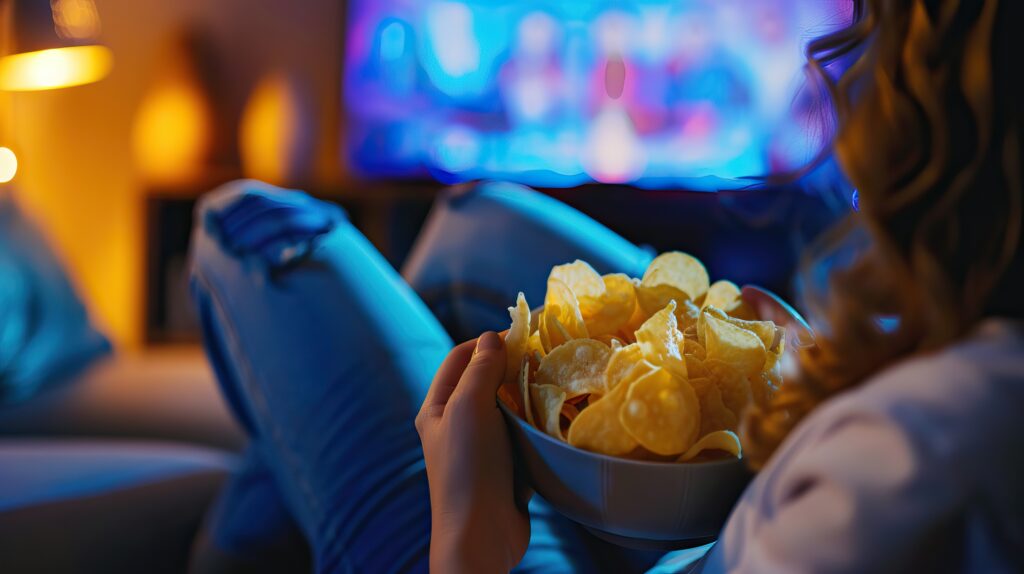In a recent session, my client, Brie, shared with me that she’s been having a difficult time controlling her snacking in the evening. To her credit, she’s been planning her snacking in advance but she eats in front of the television and struggles because she wants to keep eating once she has finished her planned amount. This is a common problem many people have – wanting to constantly snack while watching television, especially in the evenings. Our theory is that while TV is entertaining, it often leaves people a little bored or unengaged and during these times, their brains are pushing them to do something else to fill the gap. Television, when paired with eating, is fully immersive and entertaining (just think of how tempting popcorn and candy are at the movies!). As I discussed with Brie, however, if hunger is not the problem, then food is not the solution.

Brie and I also discussed that TV serves as a distraction that can make it hard to focus on just how much she is eating. One of the first and most important skills we teach clients when they begin weight management coaching is to eat all meals and snacks slowly and mindfully while sitting down. This helps clients enjoy their food more, notice their body signaling that they’re satiated, and avoid overeating. Eating in front of a screen is not mindful eating and it can be easy to miss signals from your body that it’s had enough. For this reason, we generally discourage clients from eating in front of a TV at all, even planned snacks, at least initially.
Brie and I decided that it is desirable for her to keep herself engaged while she relaxes with TV in the evenings. She doesn’t need food, though. We discussed several options. Many of my clients combine TV with knitting, using an adult coloring book, playing a game, or sorting through pictures. However, none of those options were going to work for Brie because she needs to use subtitles when she watches TV. We needed to find a “plus” that gives her the ability to remain engaged but doesn’t take her eyes away from the screen.
After much discussion, the two options that Brie and I came up with were “TV plus stretching” and “TV plus sipping hot tea.” I also reminded Brie that if at any point the effort of not eating while watching TV felt really hard, she always had the option to turn off the TV and relax in a way that would help her feel fully engaged, such as reading. We knew that Brie’s brain does not associate reading with the urge to eat in the same way it does when she is watching TV, and that chances were high that once she started reading, thoughts about eating would feel much more manageable.
If you find yourself in a situation like Brie’s, it might be helpful to ask yourself: “Am I eating to fill myself? Or am I eating to fill time?” You might be surprised at just how much more in-control you feel when you understand the difference between the two and the full range of options you have!